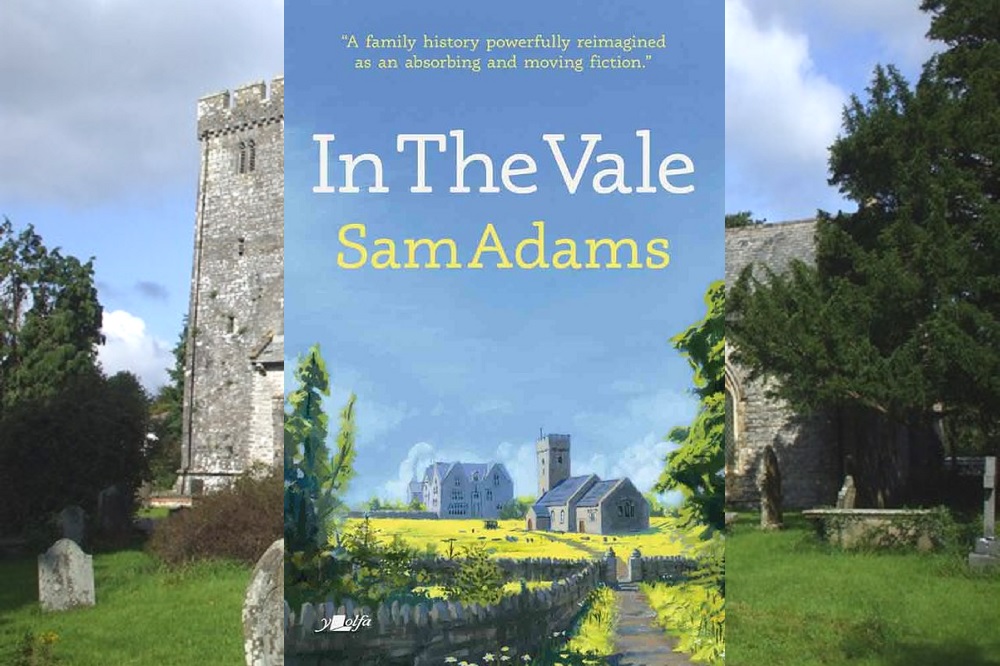Review: In the Vale is full of characters who linger long in the mind

Jon Gower
The eponymous vale of this evocative historical novel is the Vale of Glamorgan though at times it might just as easily be the Vale of Tears as children die prematurely, hunger stalks the land and the shadowy clouds of the Napoleonic Wars lengthen.
The central characters are George, a cash-strapped curate and his wife Sarah, who conveniently marries him after becoming pregnant with the child of a local landowner, Richard Aubrey. Hiding his paternity Aubrey pulls some strings and George is gifted the ancient church at Llantrithyd to look after, and thus a scant but secure living, as this is still a period when the church was granted tithes from its parishioners. They tilled the land and the churchmen prayed for them in turn, and took their scant money.
With the sure authority of Anthony Trollope writing about the clergy of Barchester, Adams details the life of the parish and a clergyman’s responsibilities therein. He is especially good on the patterns, rigours and terminology of the agricultural life. So we find George weeding a barley crop, ‘His companion in labour was one of a pair of oxen from the hovel, which needed the flick of a long, thin whip on its flank as a reminder to lift one broad hoof after another… with the same measured pace the share would spill out fresh furrows through the day.’
On a warm day in August, the communal act of haymaking sees landowners and tenants alike working in tandem, having ‘fallen into line and into the rhythm of cutting, the scythe close to the ground, arms straight, the body twisting left to right, slicing the grass neatly, adding stroke by stroke to the swathe lengthening across the field.’
All this detail, all these rhythms of the farming year are delivered with quiet authority. Here is a novelist who knows how to employ his research without show or flourish, allowing his evocations of London life, or autumnal shooting parties out to bag hares and partridges, or the rituals of rural funerals to settle fully in the reader’s mind.
Defences
Sam Adams is a long-established poet as well as a novelist so naturally, the book is shot through with passages of quiet lyricism:
“Nearing Penlline, the lane climbed steeply and passed between tall trees and hedges so high and weighted by foliage they bowed inwards, hiding the sky. In the damp warmth of May, blossoms on the hedge banks, primrose and dandelion, bluebell and celandine, strained up towards chinks of light in the canopy.”
One of the unexpected subjects of the book is that of inoculation, as Jenner’s ideas for ensuring children should not be affected by the disfigurements and threat of death by smallpox are trialled by George and Sarah on their child Bloom, with tragic consequences. Life and death, plantings and harvests, blossoming and decay: these are the patternings of the novel.
As the story proceeds so too do Britain’s preparations to deal with Napoleon’s commandeering of Europe, and a threat to British shores. Richard Aubrey becomes the commandant of the Glamorgan Militia, which finds itself on the south coast of England, digging underground defences to ward off French invasion across the channel.
For a brief while, George joins him as a curate, where the learns the men are a different breed. When he asks them where they come from, which parishes and who are their vicars one of them replies “‘No vicars,’ said the Dowlais man, ‘chapel us.’” And, as work began, the deep voice from the gloom rose again in a hymn tune, in a moment taken up it seemed by the whole body of the men, and the tune, the strong Welsh words, followed the chaplain…’
Meanwhile, back in Wales, the effect of the war is felt deeply as bread prices rise and food shortages spread and many already poor people find themselves on starvation rations. A rebellious spirit spreads among them and George, in his role as magistrate, has to stand up to them and in particular to one of the ringleaders, his surly, obnoxious gardener who turns out to have the blackest heart of all the book’s characters.
The Vale offers an absorbing insight into life in both grand houses and near-derelict hovels, setting the lives of working folk in a small corner of Wales in the context of sweeping events such as wars in Spain or Napoleon’s attempt to annexe Austria.
Sam Adams has won his spurs as a writer about history with previous works such as the novel Prichard’s Nose and Where the Stream Ran Red, a memoir of life in Gilfach Goch, the mining village where he grew up. Here, once again he proves himself to be an artist who is happy to work with a broad and busy canvas, filling it with finely detailed landscapes and cityscapes and characters who linger a long time in the mind.
Sam Adams himself has been writing since the 1960s and this latest novel shows absolutely no signs whatsoever of his tale-teller’s gifts diminishing. In fact, quite the opposite.
In the Vale by Sam Adams costs £9.99 and can be bought here.
Support our Nation today
For the price of a cup of coffee a month you can help us create an independent, not-for-profit, national news service for the people of Wales, by the people of Wales.






Superb article.